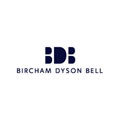The traditional tools once relied upon to secure new business by firms and businesses are still important; however, increasingly, organisations are required to master Request for Proposals (RFPs) to win new work in this competitive business environment.
Product knowledge, good negotiation skills and strong relationships form a solid foundation, but with the market constantly evolving, there has been a shift from direct interaction with end customers to more complex scenarios involving procurement professionals.
When responding to an RFP successfully, organisations need to differentiate themselves from the competition and articulate how that differentiation will benefit their client. It sounds simple; however, more often than not, when a company receives a RFP from a prospect organisation, they feel doomed before they have even begun. Trying to demonstrate value to procurement professionals can be a significant challenge.
To help move your organisation forward and respond to a RFP with a compelling proposition that clearly differentiates your firm from your competitors, follow our 7 step guide below:
- Read all of the RFP documents carefully and make notes as you go. You’d be surprised how many don’t! The RFP often holds many of the answers you need before making your decision to pursue this opportunity or not. Pay attention to all the requirements, requested format and submission schedule.
- The person who received the RFP isn’t necessarily the right person to respond.Select your team carefully to help you navigate the procurement process! It is important to have a single point of contact to make sure the document has continuity throughout.
- Do your background research. No matter how much you think you know about the company that has submitted the RFP, make sure you do your homework. It is important to understand any motives behind their request. Is there a new leadership structure? Has something changed in the market in which this organisation operates?
- Don’t overload your proposal with ‘Interesting’ FAQs about your business.Sometimes, the RFP response can become bogged down in unneeded detail (We are a global company, been in business since…, employ hundreds of staff….) Clients want to know how you can help them. They are not necessarily interested in features of your organisation.
- Remember to fulfil the mandatory requirements within the RFP. Describe how you will approach the project and best serve the potential client’s needs. Try to include specific references to the goals and objectives provided in the RFP. Show you understand their needs and expectations and that you have the strategies and abilities to meet them.
- Once the above has been covered, add ‘value’ to your proposal. Adding value to your proposal can be the icing on the cake. However, you need to consider the impact that it may have on your bottom line. Start by focusing on ‘added-value’ that is simply part of how your business operates efficiently. Remember to keep any additional collateral to a minimum, marketing materials are seldom kept or read.
- And finally…Once you have submitted, ask for feedback! A written proposal is unlikely to win outright without a follow up meeting. A poor proposal, however, can mean you progress no further. If your proposal is unsuccessful, use this experience as a learning curve. Follow up the prospect organisation and ask why. The valuable feedback could help you win more business in the future.
















